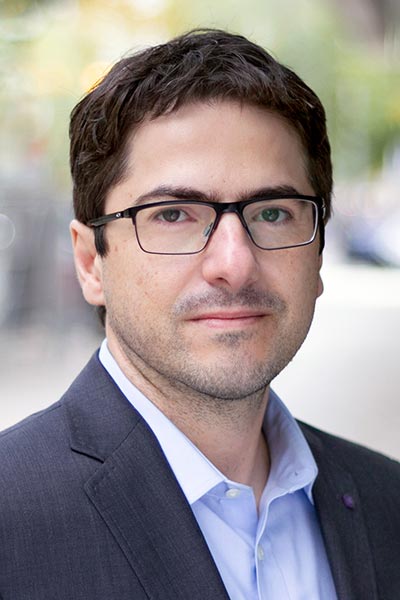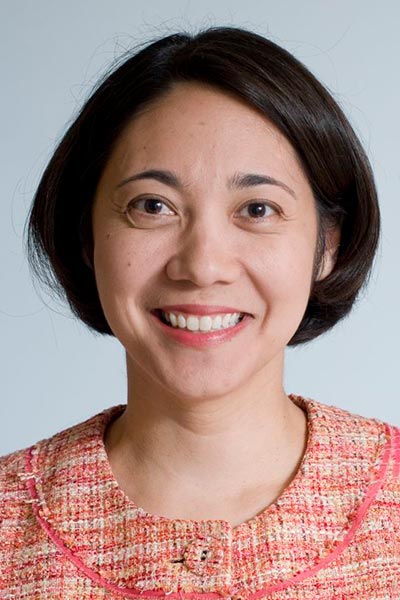Sessions highlight advances in cancer early detection and interception
A series of scientific sessions dedicated to the early detection of cancer and the interception of new tumors, progressive disease, and recurrent lesions kicks off today at the AACR Annual Meeting 2025.
Cancer is generally more treatable when caught earlier, before it has had a chance to invade nearby tissues, spread to distant sites, or evolve complex mutations that may confer intrinsic drug resistance. Consistent advances in screening technology and evolving screening guidelines aim to reduce cancer mortality by catching more cancers early.

“These innovations are ushering in a new era of clinical development, enabling therapeutic interventions aimed at intercepting cancer at different stages—whether at initiation, progression, or recurrence,” said Daniel De Carvalho, PhD, from the Princess Margaret Cancer Centre.
De Carvalho is the chair of one of three Advances in Early Detection and Interception sessions happening at the meeting. The session, Finding the Needles in the Haystack: Novel Technologies that Leverage the Cancer Genome, Epigenome, Repeatome, and Proteome for Cancer Detection, will take place today, April 28 from 12:30 to 2 p.m. CT in Room S100 BC (Grand Ballroom BC) within McCormick Place South. Researchers will discuss innovative blood-based cancer detection techniques that go beyond basic gene sequencing.
In the session, Kathleen H. Burns, MD, PhD, from the Dana-Farber Cancer Institute, will demonstrate how her group has developed an assay that leverages cancer-specific activation of L1 retrotransposons for multicancer early detection. Detecting cancer is also important later in the disease course when monitoring for signs of a relapse. De Carvalho will show how his group is using tumor-agnostic, cancer-specific DNA methylation patterns to monitor immunotherapy response and detect minimal residual disease (MRD). Charles Swanton, MD, PhD, FAACR, from the Francis Crick Institute, will discuss how personalized panels of somatic mutations were used to detect MRD in lung cancer patients enrolled in the TRACERx clinical trial.

Another session, Opportunities in Cancer Early Detection Using Next Generation Liquid Biopsies, will take place tomorrow, April 29, from 10:15 to 11:45 a.m. in Room S100 BC (Grand Ballroom BC) within McCormick Place South. Session Chair Victor E. Velculescu, MD, PhD, FAACR, from the Johns Hopkins University Sidney Kimmel Cancer Center, and colleagues will explore how ultrasensitive genomics, fragmentomics, and proteomics are expanding the ability of liquid biopsies to detect cancer early.
Velculescu will discuss the burgeoning field of fragmentomics, or the analysis of the size and structure of cell-free DNA fragments rather than the genes they encode, to sensitively and accurately detect various tumor types. Samir M. Hanash, MD, PhD, from The University of Texas MD Anderson Cancer Center, and Ronny Drapkin, MD, PhD, from the University of Pennsylvania Perelman School of Medicine, will both present multiomics approaches to find new biomarkers that can be leveraged for early detection.

The final Advances in Early Detection and Interception session, sponsored by the Margaret Foti Foundation, will shine a spotlight on the advantages and challenges of lung cancer screening programs. Lecia V. Sequist, MD, MPH, from Mass General Hospital, will chair the session, Lung Cancer Screening: Promises and Pitfalls on Wednesday, April 30, from 10:15 to 11:45 a.m. in Room S406 (Vista Ballroom) within McCormick Place South.
“Ten or so years ago—when randomized trials showed there was a survival benefit conferred by screening people with a tobacco-use history for lung cancer, and U.S. payers decided to cover screening—there was a great hope that the burden of lung cancer deaths might decrease. However, the benefits have been less than hoped,” Sequist said.
Raymond U. Osarogiagbon, MD, from Baptist Cancer Center, will open the session by reviewing the current state of lung cancer screening in the United States and explain how far we need to go to reach optimal implementation. Sequist will discuss streamlining lung cancer screening by using artificial intelligence to analyze CT scans and predict lung cancer risk. But as emerging screening technologies move beyond imaging, questions arise about how advances such as liquid biopsy may enhance the current screening paradigms. Hilary A. Robbins, PhD, MSPH, MHS, from the International Agency for Research on Cancer (IARC), will explain what is currently feasible with the use of blood-based biomarkers for lung cancer screening and discuss where the field might go from here.
Sequist, Velculescu, and Swanton are all members of the AACR Lung Cancer Task Force, which Swanton also chairs. Sequist encourages anyone with an interest in lung cancer risk and screening to attend the session she is chairing.
These sessions will also be recorded and available on-demand via the virtual meeting platform through October 2025. For the most up-to-date information on session dates, times, and locations, check the Annual Meeting App and Online Itinerary Planner. Attendees interested in lung cancer can also watch yesterday’s Advances in Organ Site Research session, Aging, Environmental Exposures, and Lung Cancer, on-demand on the virtual meeting platform.
More from the AACR Annual Meeting 2025
View a photo gallery of scenes from Chicago, continue the conversation on social media using the hashtag #AACR25, and read more coverage in AACR Annual Meeting News.

